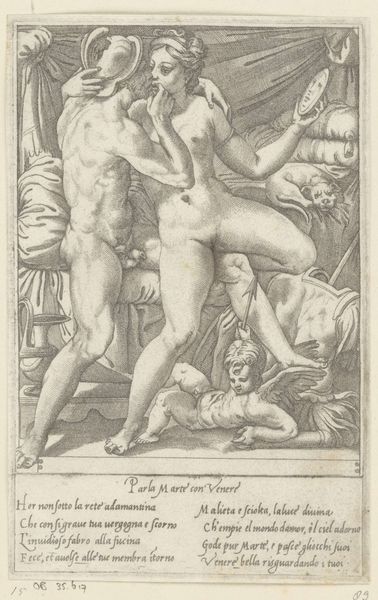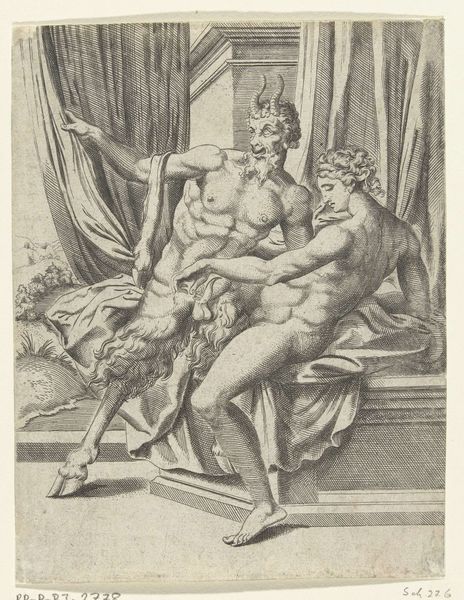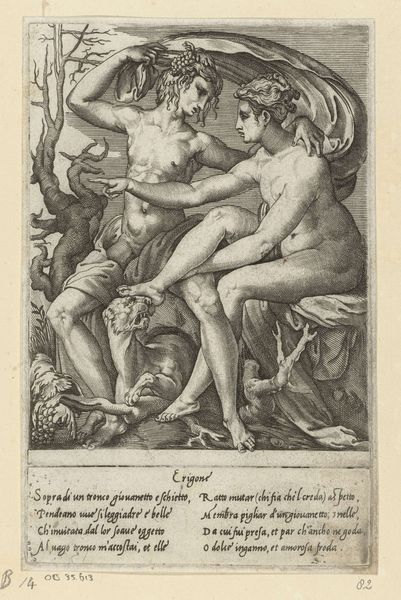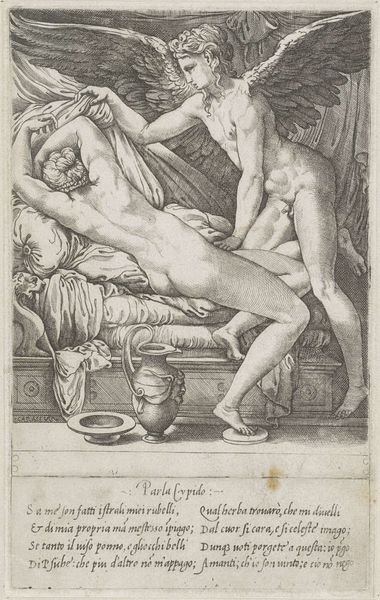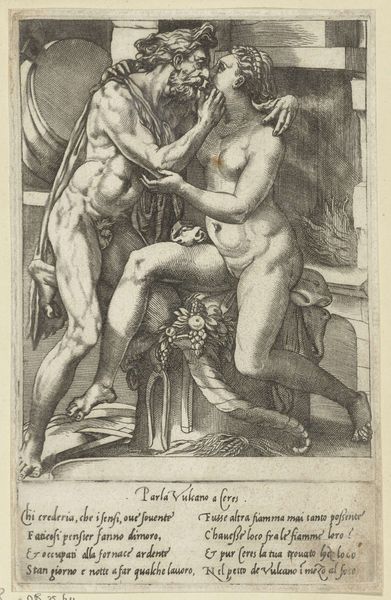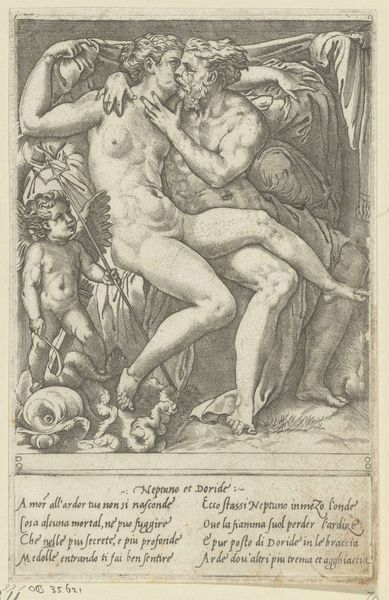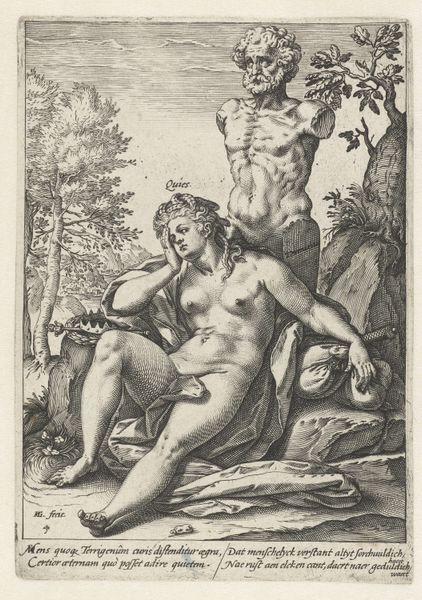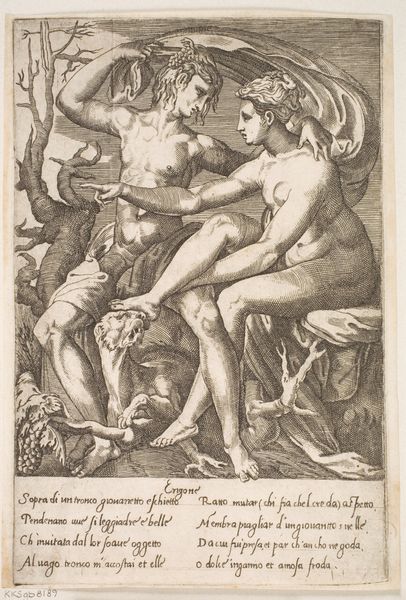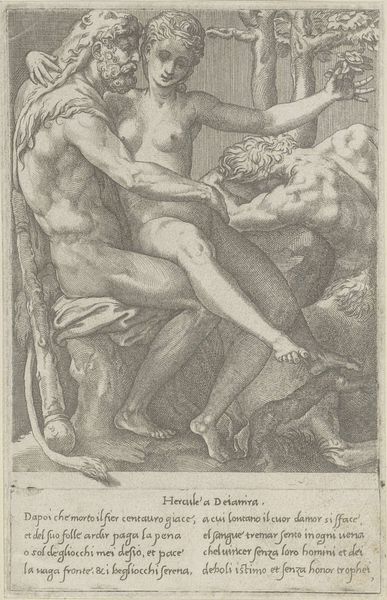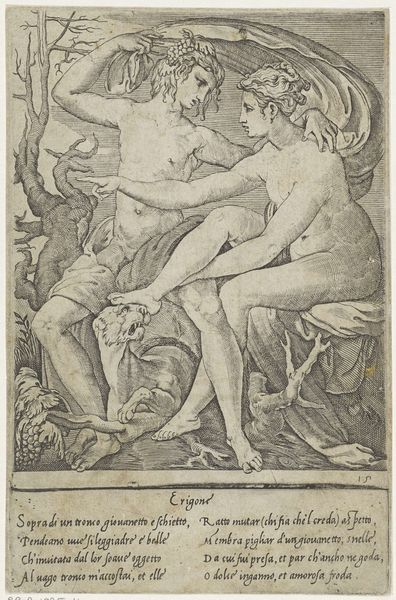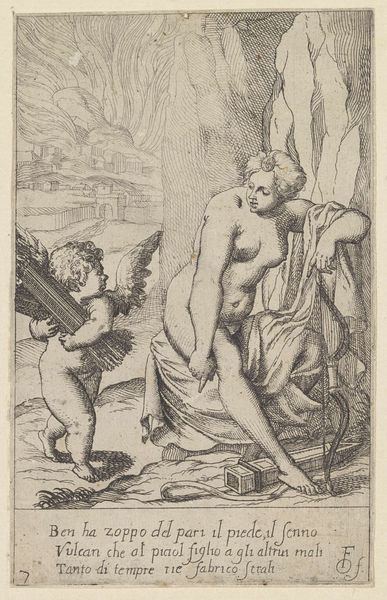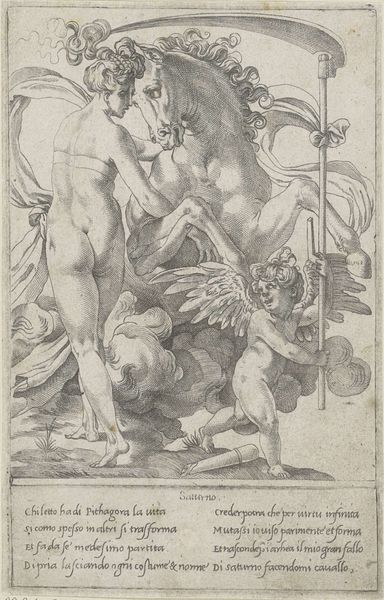
print, engraving
#
allegory
# print
#
mannerism
#
figuration
#
form
#
line
#
history-painting
#
italian-renaissance
#
nude
#
engraving
Dimensions: height 212 mm, width 135 mm
Copyright: Rijks Museum: Open Domain
Curator: Look closely at "Loves of the Gods", an engraving likely produced between 1515 and 1565, attributed to Giovanni Jacopo Caraglio. It resides here at the Rijksmuseum. What strikes you first? Editor: The sheer abundance of exposed flesh. It feels, honestly, like a sculptural exercise in contour lines rather than a tale of love or divinity. I am drawn to how the materiality of the engraving creates a very flat rendering, where only through lines can the shapes begin to appear to pop-out of the surface. Curator: That observation aligns interestingly with the Mannerist style. Caraglio, and other artists of his time, were intensely interested in idealized forms and how those forms could express narratives. Consider, too, that these prints were disseminated widely, influencing aesthetic tastes and promoting classical ideals. Editor: Influencing, certainly, and shaping ideas, as well. This particular work presents a rather cool, almost academic approach to its subject. I am left wondering, what materials would they have used to transfer these ideas to paper and spread around like this. Curator: Good point. The dissemination of such images highlights the power dynamics at play. Who had access to these prints? What messages did they convey about beauty, power, and sexuality? Were these Italian ideals appropriated? The distribution says as much about this artwork as does its central figures. Editor: Precisely! And to carry that point even further, considering the lines, forms, and classical aesthetic qualities here makes us wonder, where do we see those techniques repeated today and for what purpose? That connection to contemporary art may surprise listeners. Curator: An apt conclusion. This Mannerist print, while seemingly distant, reveals a complex interplay of material, social context, and enduring artistic influence, aspects we must all engage with as critical viewers of art and history. Editor: Right. Examining how materials, such as in this print, or how forms and processes shape our reception challenges conventional interpretations, hopefully encouraging all of us to question the choices inherent in art-making.
Comments
No comments
Be the first to comment and join the conversation on the ultimate creative platform.
